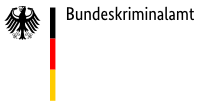One's digital identity composes of all kinds of user accounts and payment data of the specific internet user, i.e.:
Access data in the fields of:
- Communication (e-mail etc)
- E-commerce (online-banking, online-brokerage, web-based sales portals)
- Job-specific information
- E-government (i.e. online tax declaration)
- Cloud-computing
- Credit card data
- Payment addresses
At least parts of the digital identity particularly offer attraction to cyber criminals.
First of all, so-called Phishing describes one method to successfully obtain this valuable information. Phishing includes all forms of faked websites, e-mails or short messages to gain access to the user’s personal data.
Furthermore, someone’s digital identity can be stolen, based on a successful installation of malware on the victim’s computer. These pieces of information are often used for own criminal intentions as well as for the exchange of the achieved personal data on illegal platforms.
Generally known approaches of cyber criminals can be described as follows:
- The criminal pretends to host an internet presence of a reliable source (banks, parcel service, online-merchant etc). Due to that deception, the user enters his personal data and unwittingly shares the information with the perpetrator.
- After gaining personal information (name; address), criminals establish online-shops selling forged products whilst using the data of the victim to host the website.
- Cyber criminals request customers to install an update on their mobile terminal by means of serious appearing spam-mails under the name of online-payment services. A banking Trojan gets installed on the system (smartphone or tablet) autonomously, if the customer follows these instructions.
- By now, cyber criminals aim to use malware that is specified on certain data, i.e. digital identities that can be misused in all probability (i.e. concerning online-banking or –shopping).
- In spring 2014, the BSI informed about two incidents concerning identity theft: about 34 million digital identities such as e-mail addresses and pass words got stolen by cyber criminals. They gained access to these personal data either via systems of the users that got infected with malware or via attacks on hosts of online services.
In 2014, the Bundeskriminalamt registered an increase of 70,5% in cases of Phishing directly related with online-banking (2014: 6.984 cases).
It is expected that the majority of cyber related crime is not recorded formally at law enforcement agencies. Therefore, the crime rate concerning this phenomenon is probably much higher than official statistics pretend it to be.
